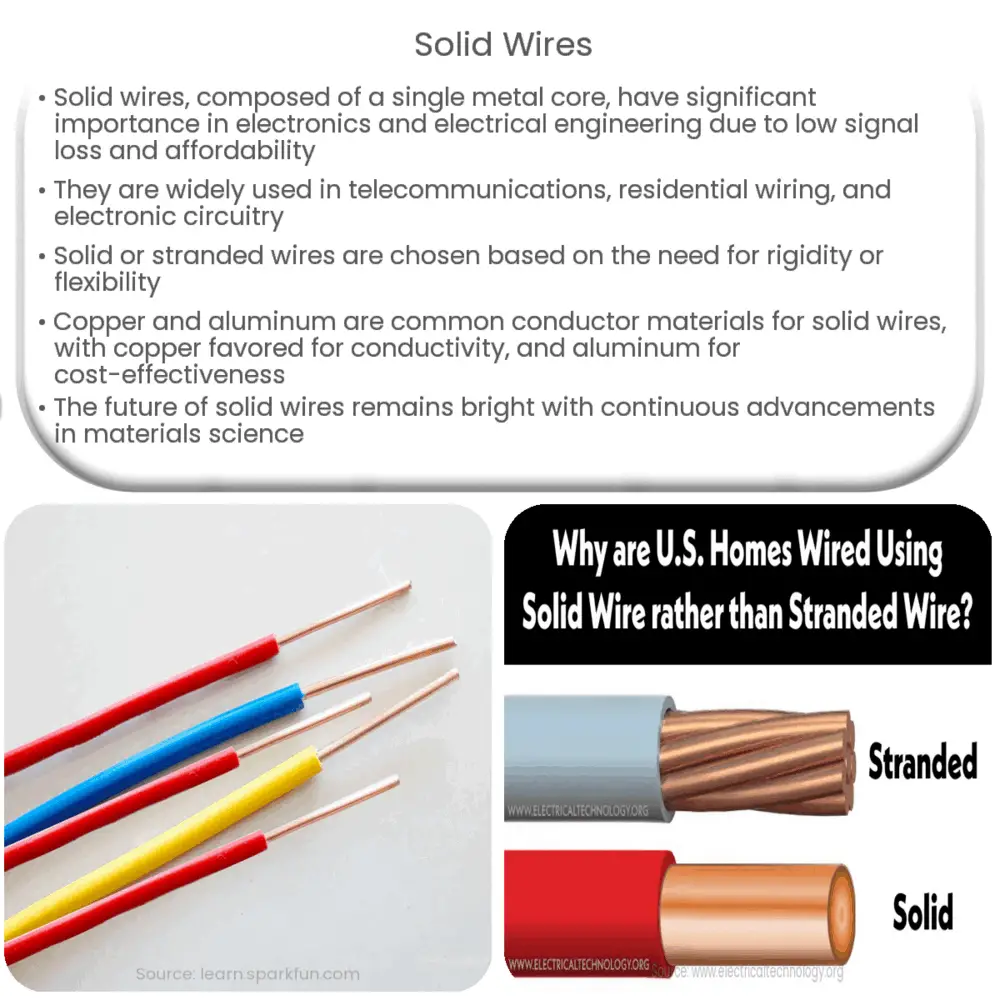Explore the world of solid wires: their benefits, applications, considerations, and future prospects in the field of electronics.

Solid Wires: Understanding Their Importance and Application
The concept of solid wires has been fundamental to the progression of electrical and electronic engineering. As the name suggests, these are wires that consist of a single, solid core of metal, typically copper or aluminum, insulated with a non-conductive material. This structure contrasts with stranded wires, which are composed of numerous smaller wires twisted together.
Benefits of Solid Wires
The advantages of solid wires are numerous, each of which is attributed to their design and structure. Firstly, solid wires have a low surface area, resulting in reduced skin effect and decreased signal loss over long distances. This makes them perfect for high-frequency or long-distance transmission lines. Secondly, solid wires are easier to manufacture and are typically less expensive than their stranded counterparts.
Applications of Solid Wires
- Telecommunication: In telecommunication, solid wires are frequently employed in long-haul telecommunication links due to their reduced signal loss.
- Residential wiring: Solid wires are also widely used in residential electrical wiring, offering safety and robustness. The solid core makes it easier to install these wires in wall sockets and switch boxes, enhancing overall installation safety.
- Electronics: In electronic circuitry, solid wires are often used to create reliable and sturdy connections between various components.
Choosing the Right Wire
The choice between solid and stranded wires primarily depends on the application. Solid wires are preferred when a low-cost, reliable, and sturdy solution is required, especially for in-wall installations or long-distance communication links. Conversely, in applications requiring higher flexibility, like in automotive or portable electronics, stranded wires are often a better fit.
Conductor Materials
The choice of conductor material for solid wires is another important aspect to consider. Most commonly, copper and aluminum are used due to their high electrical conductivity. Copper, being a better conductor, is often preferred, but aluminum, being lighter and cheaper, is an excellent choice for large-scale installations or when cost-effectiveness is a priority.
Considerations for Solid Wires
While solid wires bring many advantages, they also present certain considerations. The rigidity of solid wires can make them more prone to breakage when bent repeatedly. This characteristic can limit their use in applications where constant flexing is required, such as in robotics or moving machinery. However, for applications where wires are installed and left in place, such as building infrastructure, the rigidity of solid wires presents less of a problem.
Solid Wire Sizes
The diameter of solid wires, usually measured in gauges, is another significant factor. Smaller gauge numbers correspond to thicker wires and vice versa. The choice of wire gauge is usually a balance between cost, the amount of current to be carried, and the allowable voltage drop across the wire.
Environmental Impact
It’s important to note that copper and aluminum mining and refining can have environmental implications. Efforts to recycle and responsibly source these materials are critical. Additionally, the insulation materials used for these wires can sometimes be harmful if not disposed of properly.
Future of Solid Wires
As technology evolves, the future of solid wires appears promising. While fiber optics and wireless technologies continue to advance, the fundamental need for reliable, low-cost, and efficient conductive paths ensures the ongoing relevance of solid wires. Furthermore, advancements in materials science could pave the way for superconducting wires or wires with enhanced properties, possibly revolutionizing the current use and applications of solid wires.
Conclusion
In conclusion, solid wires play a pivotal role in our everyday lives, forming the backbone of numerous applications, from residential wiring to telecommunications. Their simple design, reliability, and cost-effectiveness make them a preferred choice for many applications. Understanding their properties, applications, and considerations is crucial to selecting the right wire for any given task. As we march further into the technological future, solid wires will undoubtedly continue to play an important part in our connected world.

